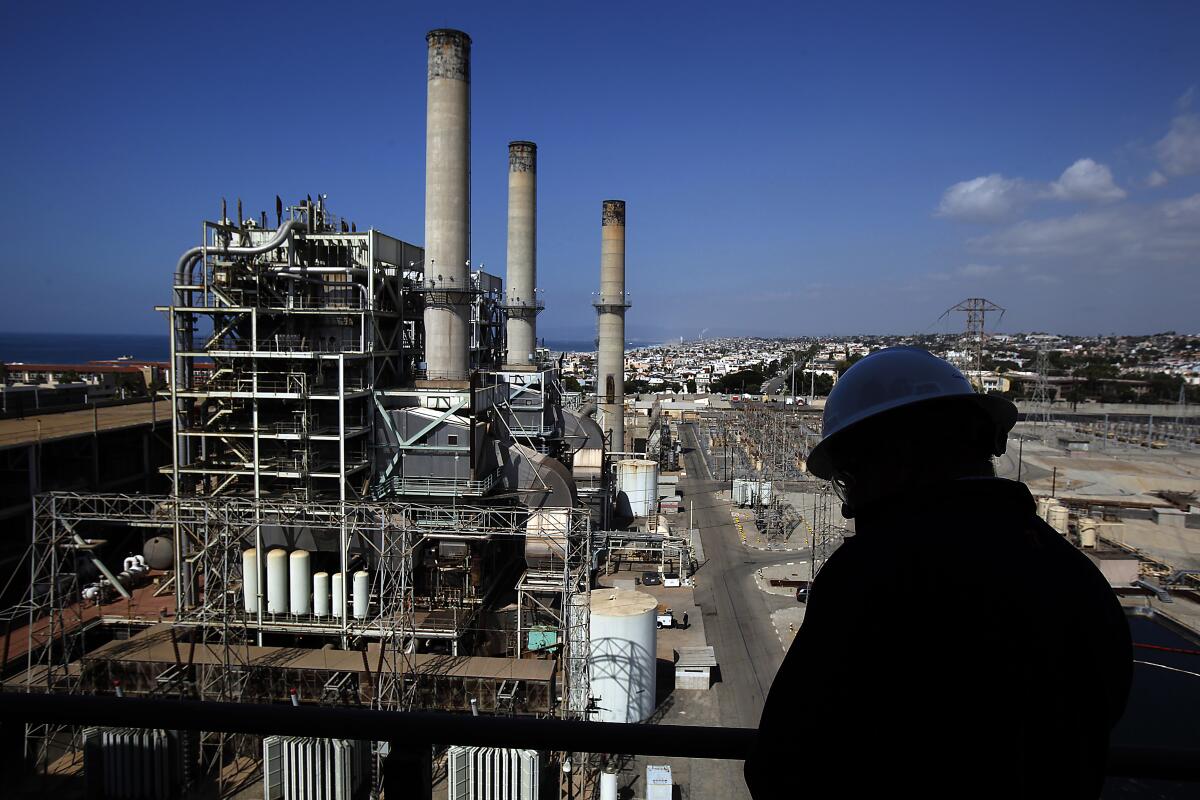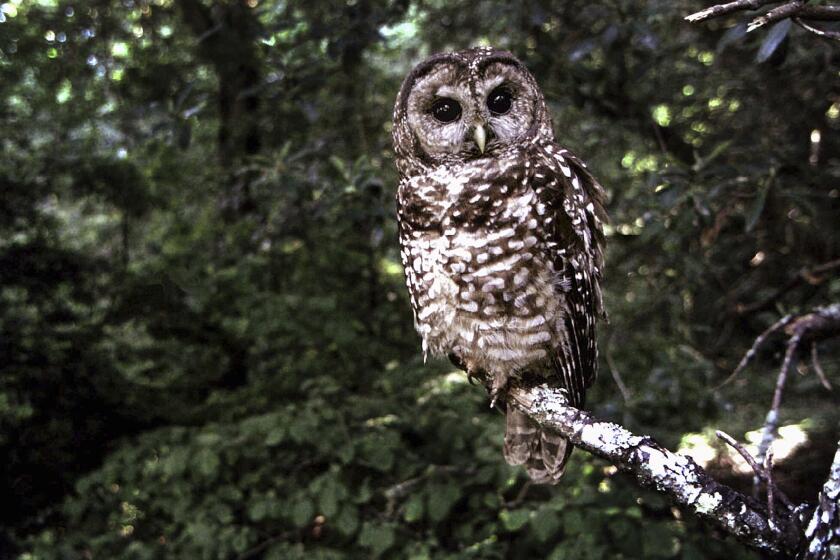Carbon dioxide levels hit all-time high even as pandemic slowed emissions, Scripps scientists say

- Share via
Atmospheric levels of carbon dioxide continue to break records despite a temporary, pandemic-induced dip in climate pollution.
Concentrations of carbon dioxide averaged 419 parts per million in May, the highest tally for any month since records began over six decades ago, scientists at UC San Diego’s Scripps Institution of Oceanography reported Monday.
Readings are taken at the National Oceanic and Atmospheric Administration observatory in Mauna Loa, Hawaii. Scripps scientist Charles David Keeling started the on-site measurements in 1958, with NOAA establishing a parallel recordkeeping effort in 1974.
“It’s rising as fast as ever,” said Ralph Keeling, a geochemist at Scripps who took over the measurement series, known as the Keeling Curve, after his father’s death in 2005. “Fossil fuel burning is the center of the problem. It’s what’s driving C02 up and is the major cause of climate change.”
Carbon dioxide and other greenhouse gases trap heat on the planet that would otherwise radiate into space. The highest monthly averages for carbon dioxide typically happen in May, before plants in the Northern Hemisphere start to suck up large amounts of the gas during the growing season. Oceans and other natural ecosystems also act as what are known as carbon sinks.
Across the West, power grid managers and utilities are preparing for heat waves.
Last year, energy-related carbon dioxide emission fell by the largest percentage since the 1940s, according to the International Energy Agency. As investments in renewable power continued to ramp up, the pandemic caused a decline in transportation emissions, notably from depressed travel on roads and through the air.
However, those temporary reductions have not been enough to make a significant dent in the overall trajectory of carbon-dioxide accumulations in the atmosphere. In May 2020, the average carbon dioxide concentration was 417 parts per million. Daily levels have already exceeded 420 parts per million twice this year.
The emission reductions from the pandemic were “too small and too short in duration to show up clearly,” Keeling said of the data from Mauna Loa Observatory. “This was really small in comparison to what we need to do going forward.”
Humans emit roughly 40 billion metric tons of carbon dioxide annually, pollution that can persist in the atmosphere and oceans for thousands of years, said Pieter Tans, a senior scientist with NOAA’s Global Monitoring Laboratory.
“If we want to avoid catastrophic climate change, the highest priority must be to reduce CO2 pollution to zero at the earliest possible date,” Tans said.
In February, the United States rejoined international efforts to limit global warming. Still, the recent readings from Mauna Loa suggest that pledges to phase out fossil-fuel consumption have yet to significantly rein in climate emissions, let alone reduce overall atmospheric concentrations.
Keeling, 64, said he hopes to see his father’s curve start to flatten within his lifetime but is skeptical he’ll live to see a substantial downward trend.
“I’m hopeful we’ll see slower growth over the next decade,” he said. “That’s what I think can realistically happen, and once we see that, we can say, ‘Yeah, we can control this thing.’”








